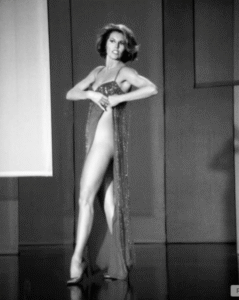From Sickly to Stunning: The Polio Survivor Who Became a Hollywood Icon
Before he was the Sundance Kid, before he was the golden-haired rebel who defined a generation, Robert Redford was just a boy in bed—feverish, frightened, and fighting a virus that had gripped the world in terror.
At age 11, Redford contracted polio. It was a mild case, but in the early 1950s, even “mild” meant weeks of bedrest, isolation, and the looming fear of paralysis. “It wasn’t an iron lung case,” he later recalled, “but it was severe enough to put me in bed for two weeks”. In a time when iron lungs lined hospital corridors and playgrounds emptied at the first sign of summer, polio wasn’t just a disease—it was a shadow.
Redford survived. But the experience left a mark—not on his body, but on his psyche. It taught him about fragility. About silence. About the quiet strength it takes to endure.
And then, he transformed.
🎬 The Rise of a Reluctant Star
Redford didn’t chase fame. He stumbled into it. After a brief stint at the University of Colorado and a transformative year in Europe, he found himself drawn to the arts—not for applause, but for expression. He studied painting in Paris, then acting in New York. His early roles were modest, but his presence was magnetic.
By the 1960s, Redford had become a fixture on screen. Butch Cassidy and the Sundance Kid made him a household name. The Sting cemented his status. All the President’s Men proved he had depth. He wasn’t just a pretty face—he was a storyteller, a truth-seeker, a man who carried his past like a compass.
And behind the scenes, he was building something bigger.
🌄 Sundance and the Power of Platform
In 1981, Redford founded the Sundance Institute—a haven for independent filmmakers, dreamers, and voices that didn’t fit the Hollywood mold. It wasn’t just a festival. It was a movement. A place where art could be raw, real, and revolutionary.
Redford didn’t just act—he directed. Ordinary People, his debut, won the Academy Award for Best Director. He followed it with films that explored grief, justice, and the American psyche. He wasn’t afraid to get political, personal, or poetic.
And through it all, he remained grounded. Quiet. Intentional.
The boy who once lay in bed fearing his body would betray him had become a man who used his voice to lift others.
🧬 A Tribute to the Man Who Saved Millions
Redford never forgot polio. He never forgot the fear, the isolation, the way the world held its breath every summer. And he never forgot Jonas Salk—the scientist who developed the polio vaccine and changed history.
In one of his most poignant gestures, Redford directed a segment of the documentary series Cathedrals of Culture, highlighting the Salk Institute for Biological Studies. Located in La Jolla, California, the institute is a marvel of architecture and innovation. But for Redford, it was more than a building. It was a monument to resilience.
“I did not grow up far from the place where the building was made,” he said. “It’s a place that reminds me of what’s possible when people care enough to change the world.”
It was his way of saying thank you. Of honoring the man who helped ensure that millions of children—including himself—would live to tell their stories.
🧵 From Illness to Icon
Redford’s journey isn’t just about fame. It’s about transformation. About turning weakness into wisdom. About using pain as fuel.
He could have let polio define him. He could have let fear shrink him. But instead, he expanded. He became an actor, a director, an activist, a mentor. He became a mirror for a generation searching for authenticity.
And he never stopped evolving.
Even in his later years, Redford continued to challenge himself. He took on roles that explored aging, legacy, and loss. He played villains, visionaries, and men on the edge. He never settled. He never coasted.
Because he knew what it meant to fight for every breath.
🌟 Legacy in Motion
Today, Redford is more than a Hollywood icon. He’s a symbol. Of endurance. Of integrity. Of the quiet power that comes from surviving something that could have broken you.
His story reminds us that illness doesn’t define us. That beauty can come from struggle. That the most stunning transformations often begin in the most vulnerable places.
From sickly to stunning.
From silence to Sundance.
From a boy in bed to a man who helped reshape cinema.
Robert Redford didn’t just survive polio.
He transcended it.



